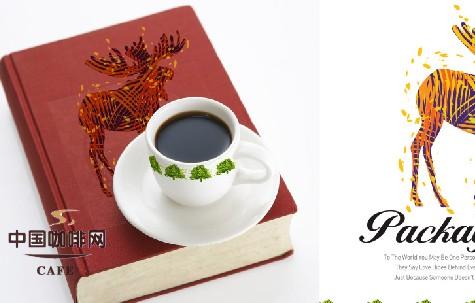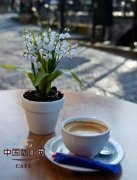Boutique coffee. Refreshing Colombian coffee.

Coffee was first introduced to Colombia in 1808 when it was brought by a priest from the French Antilles via Venezuela. Today, the country is the second largest producer after Brazil, with an annual output of 13 million bags of 60 kg each, while Brazil produces 22 million bags a year. The status of coffee in Colombia is illustrated by the fact that all vehicles entering the country must be sprayed and sterilized so as not to inadvertently cause disease and damage coffee trees.
Colombian coffee is one of the few individual coffees sold in the world under the name of the country. In terms of quality, it has won praise unmatched by other coffee. The country is the world's largest exporter of Arabica coffee beans, while Robusta coffee is rarely grown. It is also the world's largest exporter of washed coffee beans (Washedbeans). Compared with other producing countries, Colombia is more concerned with developing products and promoting production. It is this, coupled with its superior geographical and climatic conditions, that makes Colombian coffee excellent in quality and delicious and famous all over the world.
The country's coffee-producing areas are located in the foothills of the Andes, where the climate is mild and the air is humid. Colombia has three Cordilleras mountains (sub-mountain system) running north and south, right into the Andes. Coffee is grown along the highlands of these mountains. The mountain steps provide a diverse climate, which means that the whole year is the harvest season, with different kinds of coffee ripening at different times. And fortunately, unlike Brazil, Colombia doesn't have to worry about frost. There are about 2.7 billion coffee trees in Colombia, 66 per cent of which are planted in modern plantations and the rest on small, traditionally run farms.
The main production areas of Colombia are in the central and eastern mountains. The most important plantations along the central mountains are located in Medellin, Armenia and Manizales, where coffee is of the best quality and high price, characterized by full grains, rich nutrients, rich aromas and moderate acidity. Taken together, the three regions are referred to as MAM (the initials of the major cities in the three regions). Most of Colombia's top coffee for export comes from MAM. Along the eastern mountains, the two best areas are around Bogota and then north around Bucaramanga. Bogota coffee is less acidic than Medellin coffee, but the two are of the same quality.
German imports account for 25 per cent of Colombia's total exports, reflecting the excellent quality of the country's coffee. Coffee grades are divided into Supremo, Excelso and UGQ,UnusualGoodQuality. Klauss coffee in the excellent grade is exported to Germany and Europa coffee is exported to Nordic countries. Excellent grade coffee and top coffee can be bought in most coffee shops. The difference between the two professional regulations is that the coffee beans used in top coffee are larger, and the raw materials are taken from newly harvested coffee beans, so it is easier to ensure the quality of the products. Excellent coffee is usually softer and slightly more acidic than top coffee, but both are aromatic coffee with moderate granules and excellent fruit. Colombian coffee is often described as having a silky taste. Of all the coffees, it has the best balance. It tastes soft, smooth and ready to drink.
Important Notice :
前街咖啡 FrontStreet Coffee has moved to new addredd:
FrontStreet Coffee Address: 315,Donghua East Road,GuangZhou
Tel:020 38364473
- Prev

Yemeni mocha coffee is the best coffee in the world.
Yemeni Mocha Coffee Origin: YemenGrade: Excellent Granule: Full Acidity: Slightly Acidic, Strong, Sweet Evenness: SmoothRoast: Medium Flavor: Chocolate, Slightly Bouquet, Spicy StimulationEthiopia was the first country in the world to discover coffee, but Yemen was the first country in the world to use coffee as a crop
- Next

The basic knowledge of boutique coffee the origin of Kopi Luwak
Guide: Kopi Luwak, also known as civet coffee, is one of the most expensive coffees in the world. This kind of coffee is actually extracted and baked from the droppings of arboreal wild animals in Indonesia, commonly known as civet cats. When I was a child, I heard such a saying: a flower in a crop depends entirely on dung. It may not have occurred to you that one day you will use perfume made from animal manure and drink animal manure.
Related
- Detailed explanation of Jadeite planting Land in Panamanian Jadeite Manor introduction to the grading system of Jadeite competitive bidding, Red bid, Green bid and Rose Summer
- Story of Coffee planting in Brenka region of Costa Rica Stonehenge Manor anaerobic heavy honey treatment of flavor mouth
- What's on the barrel of Blue Mountain Coffee beans?
- Can American coffee also pull flowers? How to use hot American style to pull out a good-looking pattern?
- Can you make a cold extract with coffee beans? What is the right proportion for cold-extracted coffee formula?
- Indonesian PWN Gold Mandrine Coffee Origin Features Flavor How to Chong? Mandolin coffee is American.
- A brief introduction to the flavor characteristics of Brazilian yellow bourbon coffee beans
- What is the effect of different water quality on the flavor of cold-extracted coffee? What kind of water is best for brewing coffee?
- Why do you think of Rose Summer whenever you mention Panamanian coffee?
- Introduction to the characteristics of authentic blue mountain coffee bean producing areas? What is the CIB Coffee Authority in Jamaica?

